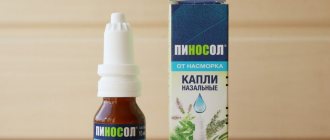T. A. Nefedova chief physician of the CrocoDent clinic, Russia, Moscow
Statistics from 20 years of use of the anesthetic Sevoran in various countries allows us to assert that today it is the safest and most harmless drug for general anesthesia. In the European Union, USA, Japan and other civilized countries of the world, no medical procedures are carried out forcibly on children. A doctor who treats forcibly will be deprived of his license, and parents of parental rights.
In our country, parents still have a choice: to hold their child and forcefully try to treat teeth or to cure everything “in a dream”: quickly, efficiently, and most importantly without pain and fear, giving their baby not only healthy and beautiful teeth, but also fearless visit to the dentist for life.
The latest generation anesthetic “Sevoran” is the best that modern science can offer for safe treatment during sleep, therefore general anesthesia is carried out with this drug. When treating teeth under anesthesia, pediatric dentists first of all pay attention to the safety of the little patient.
The drug "Sevoran" creates psychological comfort for the child:
- sleep “from the first breath”;
- nice smell;
- waking up immediately after the supply stops;
- removal of “Sevoran” from the body occurs quickly and without a trace;
- There are practically no allergic reactions.
What are the indications for use of the drug Sevoran?
The main indication for dental intervention in children and adolescents is the need to preserve temporary and permanent unformed teeth. Early removal of primary teeth leads, first of all, to disruption of bite formation. Carious teeth are a source of infection not only for the permanent tooth buds located underneath them, but also for the entire organism as a whole. Chronic diseases develop and immunity decreases.
There are situations when dental treatment must be performed under general anesthesia. Here are some of them:
- Young children (1 - 4 years old) cannot yet interact with a dentist.
- Previous negative (negative) treatment experience (dental phobia syndrome).
It is precisely attempts at treatment at such a tender age (1 - 4 years), especially if treatment was carried out while holding the child, that lead to the formation of a fear of dental interventions for the rest of his life.
In addition, with retention treatment, the quality of dental treatment decreases, dental problems become even worse, and treatment becomes even more complex and lengthy. But the most difficult thing is not to cure the baby’s teeth, but to restore his trust in the doctor.
Main indications:
- Children and adolescents with organic lesions of the central and peripheral nervous systems (cerebral palsy (CP), autism, mental retardation, encephalopathy), as well as genetic diseases, such as Down's disease.
- Parents' desire to have all their teeth treated in one visit.
- Intolerance to drugs for local anesthesia (severe allergic history).
Sevorane®
General recommendations
The drug Sevoran® can only be used by specialists
trained in general anesthesia, in the department -
facilities equipped with everything necessary to ensure airway patency, perform artificial ventilation, oxygen therapy and resuscitation.
All patients undergoing anesthesia with sevoflurane should be monitored, including monitoring of the electrocardiogram (ECG), blood pressure (BP), oxygen saturation, and end-tidal carbon dioxide (CO2) partial pressure.
During anesthesia, an increase in sevoflurane concentration leads to the development of dose-dependent blood pressure. Since sevoflurane is insoluble in blood, these hemodynamic changes may occur earlier than with other inhaled anesthetics. Deep anesthesia may be associated with a significant decrease in blood pressure and respiratory depression; To correct these phenomena, it is recommended to reduce the concentration of sevoflurane in the gas mixture.
The concentration of the drug coming from the evaporator must be precisely known. Since inhalational anesthetics differ in physical properties, only specially calibrated evaporators for Sevoran® should be used to deliver Sevoran®. The dosage of the drug during general anesthesia should be selected individually depending on the patient's response. With an increase in the concentration of the drug, an increase in arterial hypotension and depression of respiratory function may be observed.
There have been isolated reports of QT prolongation, very rarely associated with torsade de pointes (TdP) (in some cases fatal). Sevoran should be used with caution in patients susceptible to these complications.
There have been isolated case reports of ventricular arrhythmias in pediatric patients with Pompe disease. General anesthesia drugs, including Sevoran®, should be used with caution in patients with mitochondrial diseases.
Increasing the concentration of sevoflurane to maintain general anesthesia causes a dose-dependent decrease in blood pressure. An excessive decrease in blood pressure may be associated with deep general anesthesia; in such cases it can be increased by reducing the concentration of sevoflurane supplied.
When using the drug Sevoran, as well as other drugs for general anesthesia, in patients with coronary heart disease, it is necessary to maintain stable hemodynamics to avoid myocardial ischemia.
After recovery from anesthesia, patients require additional observation before transfer to a specialized department.
Replacement of overdried CO sorbents?
When using the drug Sevoran® in anesthesia devices containing overdried CCL sorbents (especially those containing potassium hydroxide), rare cases of excessive overheating and/or spontaneous smoke and/or ignition of anesthesia devices have been described. When CO2 sorbent reservoirs overheat, an unusual delay in increase or unexpected decrease in the inhalable concentration of Sevoran® may occur, despite the existing evaporator settings.
The exothermic reaction of sevoflurane decomposition with the formation of products of this decomposition, which occurs during the interaction of sevoflurane with a CO2 sorbent, intensifies if the sorbent dries out; for example, during long-term passage of dry gas through a tank with CO2 sorbent. The formation of sevoflurane decomposition products (methanol, formaldehyde, carbon monoxide, and components A, B, C and D) was observed in the breathing circuit of experimental anesthesia machines with overdried sorbents when the sevoflurane concentration reached a maximum (8%) for 2 or more hours . Formaldehyde concentrations generated under such conditions reached levels capable of causing mild respiratory tract irritation. Clinical evaluation of the effects of sevoflurane degradation products on the body under extreme conditions has not been carried out.
If the anesthesiologist suspects that the CO2 sorbent is too dry, it should be replaced before using sevoflurane. When the CO2 sorbent dries out, the color of the indicator does not always change. Therefore, the absence of changes in the color of the indicator cannot be considered confirmation of adequate hydration. CO2 sorbents must be changed regularly, regardless of the color of the indicator.
Hyperkalemia in the perioperative period
The use of inhalational anesthesia in children has, in rare cases, caused an increase in serum potassium concentrations, which has led to the development of cardiac arrhythmias and death in the postoperative period. The risk is higher in patients with latent and clinically manifested neuromuscular diseases, especially in patients with Duchenne muscular dystrophy. In most cases, there was a connection between the development of these complications and the simultaneous use of suxamethonium. These patients also experienced a significant increase in serum creatine phosphokinase activity and, in some cases, changes in urine composition indicating myoglobinuria. Although there are some similarities with the manifestations of malignant hyperthermia, none of these cases showed muscle rigidity or symptoms associated with increased muscle metabolism. Measures to relieve hyperkalemia and persistent arrhythmia should be immediately initiated and an examination should be carried out to identify latent neuromuscular disease.
Renal dysfunction
The safety of Sevoran in this group of patients has not been fully established; it should be used with caution in patients with renal failure.
Data from controlled studies using low gas flow rates are limited, however, clinical and experimental data indicate the possibility of kidney damage, presumably due to component A. According to these data, the use of sevoflurane for 2 MAC hours at low gas flow rates ( less than 2 l/min) may be associated with the development of proteinuria and glycosuria.
The level of exposure to component A at which clinical nephrotoxicity is possible has not been established; however, all factors leading to increased exposure to component A in children should be considered, particularly the duration of exposure, gas flow rate and sevoflurane concentration. During anesthesia, the concentration of inhaled sevoflurane should be titrated and the flow rate of the gas mixture monitored to minimize exposure to component A. To achieve this, sevoflurane exposure should not exceed 2 MAC x hour, at a flow rate of 1 to < 2 l/min. Gas mixture flow rates < 1 l/min are not recommended.
Clinical experience with sevoflurane in patients with renal impairment (creatinine clearance > 1.5 mg/dL) is limited;
therefore, the safety of the drug in these patients has not been established.
Liver dysfunction
In post-marketing surveillance, very rare cases of liver dysfunction (mild to severe) or hepatitis (with or without jaundice) in the postoperative period have been reported.
Sevoflurane should be used with caution in patients with impaired liver function, as well as in concomitant use of drugs that can cause impaired liver function. There is evidence that a history of use of halogenated anesthetics, especially within the previous 3 months, may increase the risk of developing liver damage.
There are reports that a history of exposure to halogenated hydrocarbons may increase the potential for liver injury.
Rare cases of mild, moderate, or severe postoperative liver dysfunction or hepatitis (with or without jaundice) have been reported. Caution is recommended when using sevoflurane in the setting of liver dysfunction or in patients receiving treatment with drugs known to cause liver dysfunction. In patients who have experienced liver damage, jaundice, fever of unknown origin, or eosinophilia after the use of other inhalational anesthetics, it is recommended to avoid the use of sevoflurane if general anesthesia with intravenous drugs or regional anesthesia is possible. Malignant hyperthermia
In susceptible individuals, potent inhalational anesthetics, including sevoflurane, can induce a state of skeletal muscle hypermetabolism, resulting in increased oxygen demand and the development of a clinical syndrome known as malignant hyperthermia. The first sign of this syndrome is hypercapnia. Muscle rigidity, tachycardia, rapid breathing, cyanosis, arrhythmias and/or blood pressure instability may also occur. Some of these nonspecific symptoms may also occur during mild anesthesia, acute hypoxia, hypercapnia, and hypovolemia.
One case of malignant hyperthermia was reported in clinical studies. In addition, cases of malignant hyperthermia (including fatal cases) have been reported in post-marketing surveillance.
Treatment of malignant hyperthermia involves discontinuation of drugs that caused its development (for example, sevoflurane), intravenous administration of dantrolene (detailed information on the use of dantrolene is given in its instructions for use) and supportive intensive symptomatic therapy, including maintaining normal body temperature, respiratory and circulatory functions, monitoring water-electrolyte and acid-base balance. Renal failure may develop later, so diuresis should be monitored and maintained if possible.
Neurosurgical interventions
If the patient is at risk of increased intracranial pressure, Sevoran® should be used with caution in combination with measures aimed at reducing intracranial pressure, such as hyperventilation.
Convulsions
There have been reports of rare cases of seizures associated with the use of sevoflurane.
Use in children
There are known cases of seizures occurring during the use of sevoflurane. Many of these cases occurred in children (from two months of age) and adolescents; most of them had no risk factors for seizures.
Sevoflurane should be used with caution in patients with a tendency to develop seizures.
In children who were prescribed sevoflurane for induction of anesthesia, dystonic movements were observed that disappeared on their own without requiring treatment. A causal relationship with sevoflurane has not been confirmed.
Children with Down syndrome are at increased risk of bradycardia and hypotension during and after induction with sevoflurane.
Anesthesia in obstetrics
Sevoflurane has a relaxing effect on the uterus due to its pharmacological effects. A study performed during termination of pregnancy indicates increased uterine bleeding.
Available data supporting the safety of sevoflurane for mother and baby during elective caesarean section are limited. The safety of sevoflurane during vaginal delivery has not been studied.
Protocol for treatment under anesthesia in an outpatient setting?
Before treatment, a detailed consultation with a dentist and an anesthesiologist is necessary in order to draw up a preliminary treatment plan, identify and eliminate all possible risks. It is necessary to provide comprehensive answers to all the parents’ questions and explain in detail what needs to be done to prepare for the upcoming anesthesia treatment.
The correct attitude of parents plays an important role in preparing for the procedure. At home, in a calm environment, they should tell the child about the procedure without scary words. You shouldn’t tell him that he will have his teeth treated under anesthesia. It is better to tell your child about the procedure in a language he understands: “To help his sick teeth, doctors will let him breathe “magic air”, which will make him fall asleep. While the baby is sleeping, the tooth fairy will fly in and cure all the bad teeth.”
Medicinal properties
The effect of the anesthetic is provided by sevoflurane. When using the substance, a rapid immersion in anesthesia and an equally rapid recovery from it are achieved. The depth of artificial sleep depends on the dosage of the medication in the inhalation mixture.
The use of the substance may cause minor nervous stimulation or mild forms of irritation of the respiratory system, without affecting respiratory functions and blood pressure levels. When compared with another anesthetic, isofluron, it was found that the number of cases of ischemia or myocardial infarction in patients at risk, as well as circulatory disorders of the brain, were the same.
The use of the substance may cause minor nervous stimulation or mild forms of irritation of the respiratory system, without affecting respiratory functions and blood pressure levels. When compared with another anesthetic, isofluron, it was found that the number of cases of ischemia or myocardial infarction in patients at risk, as well as circulatory disorders of the brain, were the same.
The substance meets international safety requirements - it does not detonate or ignite. It also does not contain any additives or synthetic stabilizers. Combines well with ethyl alcohol, ether, benzene or chloroform. It dissolves in water in small quantities.
Sevoflurane retains its properties in normal room light and is almost unaffected by powerful acids and heat. Does not provoke corrosion processes in metals and alloys. May decompose when combined with carbon dioxide in an anesthesia machine. The degree of destruction of the substance increases with the influence of temperature on the accompanying CO2 absorbent or with an increase in its concentration and a decrease in the flow of fresh gas. It can also be destroyed by alkalis. The decay process takes place in several stages.
Sevoflurane has a low degree of solubility in the blood, so this property contributes to the high speed of the patient’s immersion in anesthesia and the same speed of recovery from it, as well as the almost complete absence of metabolic processes. The derivative compound is formed in a small amount (less than 5% of the administered amount), it is inactive and does not affect cells and genes. It is excreted from the body by the kidneys.
Cross-drug interactions
The use of Sevoran should be carried out with caution when used together with Isopropenilin, sympathomimetics, as the risk of ventricular arrhythmia increases.
When combined with MAOIs, a crisis during surgery is possible. Therefore, it is recommended to stop taking inhibitors two weeks before surgery.
The use of Sevoran in patients receiving therapy with calcium blockers can contribute to a rapid decrease in blood pressure and the occurrence of complications.
The combination of succilycholine with Sevoran sometimes caused cases of increased potassium concentration in the serum, which contributed to the development of arrhythmia in the postoperative period with further death (especially in children.)
When using other intravenous anesthetics (for example, Propofol), adjustment of Sevoran may be required.
The drug is considered safe for combination with other surgical drugs: those acting on the central nervous system, autonomic nervous system, muscle relaxants, antibiotics, hormonal drugs, blood derivatives and medications for the cardiovascular system.
Sevoflurane can increase the sensitivity of the heart muscle to adrenaline.
When combined with sympathomimetics, acute episodes of hypertension occur.
Concomitant use with Verapamil may cause AV conduction disorders.
Patients receiving preoperative therapy with St. John's wort often experienced severe hypotension. Coming out of anesthesia was difficult and took a longer time.
The biotransformation of sevoflurane is enhanced by inducers of cytochrome CYP2E1 (except barbiturates). When combined with Iosianizide, its hepatotoxic effect is enhanced.
Sevoflurane can enhance the side effects of β-blockers.
Simultaneous use with opioid drugs promotes a synergistic effect in reducing heart rate, blood pressure, and respiratory depression.
When combined with medications that activate the CYP2E1 isoenzyme, the metabolism of sevoflurane is accelerated, resulting in a sharp increase in plasma fluoride concentration.
If simultaneous use of muscle relaxants is necessary, it should be taken into account that sevoflurane can change their concentration and duration of neuromuscular blockade.
Reducing the dosage of muscle relaxants during anesthesia may delay the onset of a condition in which tracheal intubation is performed or cause pathological muscle relaxation.
Contraindications and precautions
Sevoran should not be used for:
- Individual hypersensitivity to the active substance or other halogenated medications
- Diagnosed or suspected genetic predisposition to malignant hyperpyrexia
- Pregnancy, GW.
Relative contraindications (use possible with high precautions) for:
- Kidney failure
- High intracranial pressure
- IHD
- Neuromuscular pathologies.
After using sevoflurane inhalation anesthesia, it is prohibited to drive vehicles or complex machinery. The duration of the restriction is determined individually.
Analogs
Aerran
BAXTER (Puerto Rico)
Price: 1 fl. (100 ml) – 3882 rub., 100 ml (6 pcs.) – 16639 rub., 250 ml (6 pcs.) – 14802 rub.
Anesthetic for inhalation administration. Developed on the basis of isoflurane. It has a high speed of action and recovery from anesthesia. It is especially indicated during intubation, as it suppresses swallowing and laryngeal reflexes at a high rate.
Available in the form of a solution for inhalation.
Pros:
- High speed of onset of action.
- Well tolerated.
Minuses:
- Expensive.




